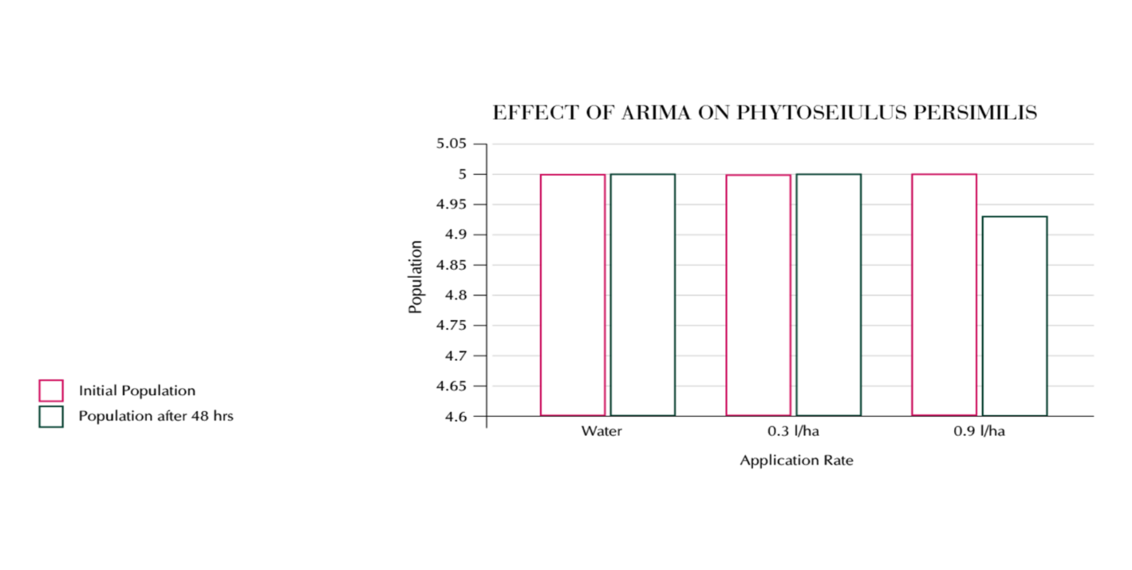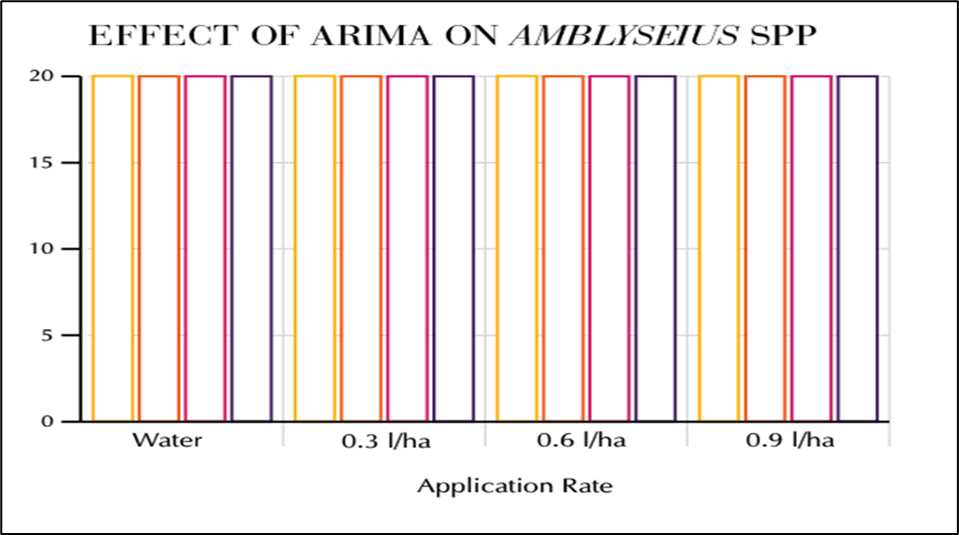Compatibility of pesticides with natural enemies used in integrated pest management
Integrated Pest Management Programmes (IPM) require the use of a wide variety of methods in the judicious management of crop pests. Among the key approaches of IPM, chemical and biological control strategies are harnessed. There are various natural enemies used in biological control of pests in crops and these include but not limited to;
- Phytoseiulus persimilis
- Amblyseius cucumeris
- Amblyseius californicus
- Amblyseius montdonrensis
- Ambylseius swirskii
- Amblyseius andersoni

However, applicability of these natural enemies in IPM programmes requires beforehand information on compatibility of commercial pesticides with the beneficial organisms. Therefore, information on WHO class, active ingredient, mode of action and toxicity level of the pesticide on natural enemies is important.
This is generated by conducting compatibility studies of pesticides with natural enemies to determine the effect on mortality and if the product can be applied alongside the natural enemies in Integrated Pest Management.
Compatibility of Arima with natural enemies

Different IOBC Categories Used to Determine the Lethal Effects of Pesticides on Beneficial Insects

Arima (Cyenopyrafen) is classified as harmless to natural enemies including; Phytoseiulus persimilis, Amblyseius cucumeris and Amblyseius californicus Amblyseius swirskii, and Amblyseius andersoni as it does not kill the predatory mites or affect their reproduction.
Arima is therefore compatible with the natural enemies according to IOBC classification.


